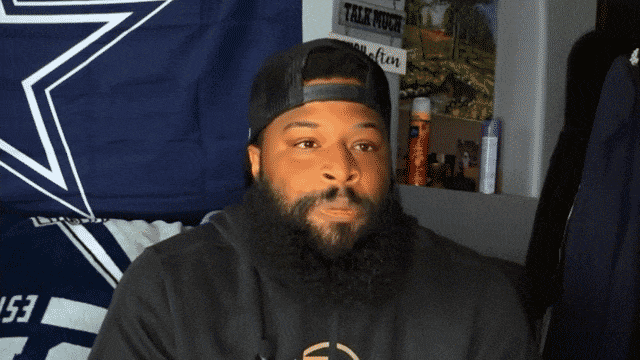“Texas Tough” McKay Law
Texas Head-on Collision Accident Lawyer
When a head-on collision turns your life upside down, McKay Law is here to set things right. Based in Texas, our firm specializes in advocating for victims of head-on collisions, bringing years of expertise and an unwavering dedication to justice. We know how overwhelming the legal process can feel after such a traumatic event, which is why we provide personalized guidance every step of the way. Our team is committed to helping you secure fair compensation so you can focus on recovery while we handle the fight for your rights. At McKay Law, your case isn’t just another file—it’s a chance for us to make a real difference.
NO FEES UNLESS WE WIN!
We only get paid when you get paid.
Receive Immediate Medical Care
Get the medical attention you need with no out-of-pocket cost in most cases.
24/7 Access To Us
We are here for you 24/7 so you can focus on healing.
Client Satisfaction
McKay Law has a reputation to be proud of with 300+ 5 star Google Reviews.
Texas Head-on Collision Accident Attorney | McKay Law
Head-on collisions are some of the most devastating and life-altering accidents a person can experience. The immense force of two vehicles colliding straight-on often results in severe injuries, costly medical bills, emotional trauma, and even the tragic loss of life. At McKay Law, we understand the overwhelming challenges head-on collision victims face, and we’re here to help you rebuild your life.
When the unexpected happens, professional legal representation can make all the difference. McKay Law is committed to being your trusted advocate, providing compassionate support while aggressively pursuing justice and compensation on your behalf.
Don’t face this challenging time alone. By partnering with McKay Law, you gain a dedicated ally who will fight tirelessly for justice on your behalf. Contact us today for a free consultation, and take the first step toward reclaiming your future.
Understanding Head-on Collision Accidents in Texas
Head-on collision accidents are among the most severe types of motor vehicle crashes, often resulting in significant injuries or fatalities. In Texas, these accidents are a critical concern due to the state’s vast network of highways, rural roads, and urban traffic. Here’s an overview to help you understand head-on collisions in Texas:
What is a Head-on Collision?
A head-on collision occurs when two vehicles traveling in opposite directions crash into each other front-to-front. These accidents typically happen at high speeds, amplifying the impact and potential for harm.
Common Causes of Head-on Collisions in Texas
- Distracted Driving: Texting, using a phone, or other distractions can cause drivers to veer into oncoming traffic.
- Driving Under the Influence: Alcohol or drug impairment significantly increases the risk of head-on collisions.
- Wrong-Way Driving: Entering a highway or road in the wrong direction is a frequent cause of these accidents.
- Fatigue: Drowsy driving can lead to loss of control and crossing into opposing lanes.
- Rural Roads: Many rural roads in Texas lack proper dividers, making it easier for vehicles to drift into oncoming traffic.
Impact of Head-on Collisions
- Injuries: These accidents often result in severe injuries, including traumatic brain injuries, spinal cord damage, broken bones, and internal injuries.
- Fatalities: Due to the high-speed nature of many head-on collisions, fatalities are unfortunately common.
- Economic Costs: Medical bills, vehicle repairs, and lost wages can place a significant financial burden on victims and their families.
Legal and Safety Considerations in Texas
- Liability: Determining fault in a head-on collision is crucial for insurance claims and legal proceedings. Factors like road conditions, driver behavior, and vehicle maintenance are often examined.
- Preventive Measures: Texas has implemented measures like better road signage, median barriers, and public awareness campaigns to reduce head-on collisions.
- Legal Support: Victims of head-on collisions may seek compensation for damages through personal injury claims. Consulting with an experienced attorney can help navigate the legal process.
How to Avoid Head-on Collisions
- Stay alert and avoid distractions while driving.
- Never drive under the influence of alcohol or drugs.
- Adhere to speed limits and road signs.
- Avoid driving when fatigued.
- Be cautious on rural roads and highways, especially at night.
Understanding the causes and consequences of head-on collisions in Texas is essential for promoting road safety and reducing the occurrence of these devastating accidents.
Lindsey McKay Takes Texas Head-on Collision Accident Cases Seriously
When it comes to head-on collision accidents in Texas, Lindsey McKay stands out as a dedicated and compassionate legal advocate. Known for her exceptional track record and client-first approach, Lindsey McKay is committed to fighting for justice for victims of devastating automobile accidents. Head-on collisions are among the most severe types of crashes, often resulting in catastrophic injuries, substantial financial burdens, and overwhelming emotional distress. Lindsey McKay understands these challenges and works tirelessly to help her clients rebuild their lives.
Compassionate Representation for Victims and Families
Lindsey McKay’s approach to representing victims goes beyond traditional legal services—she provides empathy and understanding as she helps clients in the state of Texas. She recognizes that being involved in a head-on collision is one of the most traumatic experiences a person can endure. Whether it’s a victim recovering from severe injuries or a family grieving the loss of a loved one, Lindsey is there to provide unwavering support every step of the way.
Her compassion for her clients is matched by her drive to secure justice. Lindsey knows that the aftermath of a head-on collision includes not just physical recovery but also emotional and financial challenges. She takes the time to listen to her clients’ stories, understand their unique circumstances, and develop a legal strategy tailored to their specific needs. To Lindsey, each case is personal.
An Experienced Advocate With a Proven Track Record
What truly sets Lindsey McKay apart is her unparalleled expertise in handling head-on collision cases. Over the years, she has navigated the legal complexities of countless cases involving severe injuries and wrongful deaths. This experience has honed her ability to build strong claims that stand up to even the toughest opposition.
Lindsey’s track record speaks for itself. She has successfully secured significant settlements and verdicts for her clients, ensuring they receive the financial compensation they deserve. Whether dealing with insurance companies’ resistance or presenting a compelling case in court, Lindsey approaches every challenge with exceptional skill and determination.
Her extensive knowledge of Texas laws and her ability to analyze accident details, such as police reports, medical records, and witness testimonies, make her a formidable advocate. Lindsey’s clients don’t just get a lawyer—they gain a relentless fighter who won’t stop until justice is served.
Thorough Investigations for Strong Cases
One of Lindsey McKay’s hallmarks is her meticulous approach to investigations. She firmly believes that a strong case starts with a solid foundation of evidence. From examining the crash site to consulting with accident reconstruction specialists, Lindsey leaves no stone unturned.
She investigates every detail of the crash, identifying contributing factors such as distracted driving, drunk driving, reckless behavior, or road hazards. This thoroughness allows her to build compelling arguments designed to hold the at-fault parties accountable. By uncovering the truth, Lindsey ensures her clients have the best possible chance of receiving proper compensation for their damages.
Personalized Client Care From Start to Finish
Lindsey’s clients are not just case numbers—they are individuals with unique stories and specific needs. This philosophy is at the heart of her personalized approach to legal representation. From the initial consultation through the resolution of a case, Lindsey prioritizes clear communication and transparency.
Her clients always know what to expect and are kept informed throughout the legal process. This level of care makes a significant difference for victims and families during what is often one of the most difficult times of their lives. Lindsey’s ability to combine compassion with clear guidance has earned her the trust of families across Texas.
Aggressive Advocacy in the Courtroom
While Lindsay takes a compassionate approach to working with clients, she is fiercely tenacious in the courtroom. Should a case require litigation, clients can trust that Lindsey will deliver an aggressive and well-prepared presentation.
From cross-examining witnesses to presenting evidence, she uses every tool at her disposal to fight for justice. Her courtroom demeanor, confidence, and undeniable expertise make her a powerful force against insurance companies and negligent parties who attempt to minimize victims’ claims.
Contact Lindsey McKay for Help
If you or a loved one has been involved in a head-on collision in Texas, you need a lawyer who will take your case as seriously as you do. Lindsey McKay offers the expertise, passion, and personalized care necessary to guide you through the difficult road ahead. She’ll fight to get you the justice and fair compensation that you deserve.
Don’t face this challenging time alone. Contact Lindsey McKay today to schedule your consultation and take the first step toward rebuilding your life after a head-on collision.
What Are The Most Common Types of Head-on Collision Crash Injuries In Texas?
Head-on collisions are among the most devastating types of traffic accidents, often leaving victims with severe and life-altering injuries. Beyond the immediate physical pain, these crashes can bring emotional and financial challenges that ripple through the lives of those affected. Understanding the common injuries that result from such accidents is crucial—not just for victims seeking recovery, but also for drivers aiming to stay informed and avoid dangerous situations. By shedding light on these injuries, we hope to raise awareness and underscore the importance of road safety for all Texans.
- Whiplash – A neck injury caused by sudden back-and-forth movement.
- Broken or Fractured Bones – Common in high-impact collisions.
- Head Injuries – Including concussions and traumatic brain injuries.
- Spinal Cord Injuries – Leading to potential paralysis or chronic pain.
- Internal Bleeding – Often from blunt force trauma.
- Cuts and Scrapes – From shattered glass or debris.
- Emotional Injuries – Such as PTSD or anxiety following an accident
If you or a loved one have experienced a head-on collision, it’s essential to prioritize your safety and health. Understanding the potential injuries can help you take proactive steps toward recovery and support. Remember, help is available—whether it’s seeking medical care, emotional support, or legal guidance. Stay vigilant, drive cautiously, and put safety first to protect yourself and others on the road. If you need assistance, don’t hesitate to reach out to trusted professionals who can guide you through this difficult time. Stay safe, and thank you for taking the time to learn more about this important topic.
What Damages Can I Receive from a Texas Head-on Collision Accident Claim?
Head-on collisions are among the most severe types of car accidents, often resulting in devastating injuries and significant financial burdens. If you’ve been involved in this kind of accident in Texas, understanding the types of damages you may be entitled to claim can help you rebuild your life and secure the compensation you deserve.
This guide outlines the economic, non-economic, and punitive damages available in head-on collision cases, along with practical tips to strengthen your claim.
Common damages that head-on collision accident claims may offer include:
1. Economic Damages
Economic damages are designed to compensate for measurable financial losses stemming directly from the accident. These damages are often the easiest to calculate because they come with clear documentation like receipts, medical bills, and pay stubs.
Medical Expenses
After a head-on collision, medical expenses are often the most significant economic damage. These may include:
- Emergency room visits
- Hospital stays
- Surgery and medical procedures
- Medication costs
- Physical therapy and rehabilitation
- Assistive devices like wheelchairs or braces
- Future medical expenses (e.g., ongoing treatments or long-term care)
For example, if your injuries require months of physical therapy, you could claim reimbursement for all associated costs and even anticipate future sessions with a doctor’s estimates.
Lost Wages
Serious injuries often lead to missed workdays or, in some cases, an inability to return to work entirely. You can claim for wages lost during recovery as well as diminished earning capacity if the accident affects your ability to earn income in the future. This is particularly relevant if your injuries result in a permanent disability.
Property Damage
Your car and any belongings damaged in the collision are eligible for compensation. This typically covers repairs or, in some cases, the full market value of the vehicle if it’s declared a total loss.
Out-of-Pocket Expenses
Additional costs directly related to the accident, such as travel to doctor’s appointments, childcare expenses, or modifications to your home due to a disability, can also be part of economic damages.
2. Non-Economic Damages
Non-economic damages address the intangible but very real impacts of an accident. These damages compensate for the emotional and psychological toll the accident takes on your life.
Pain and Suffering
Head-on collisions often result in severe injuries that lead to prolonged physical pain. Pain and suffering damages account for this physical distress and help you recover from the unseen hardships you endure daily.
Mental and Emotional Distress
Beyond physical recovery, the emotional aftermath can be overwhelming. Anxiety, depression, PTSD (post-traumatic stress disorder), or fear of driving again are examples of emotional distress that could justify compensation.
Loss of Enjoyment of Life
If the accident prevents you from participating in hobbies, activities, or routines you once enjoyed, you can seek damages for your loss of quality of life.
Loss of Consortium
Non-economic damages also extend to relationships. If the accident strains or diminishes your relationship with your spouse or family, you may pursue a loss of consortium claim to address this emotional damage.
While these damages are harder to quantify than economic ones, your attorney may use tools such as journals, therapist notes, and expert testimony to illustrate their impact accurately.
3. Punitive Damages
Punitive damages aren’t awarded in all cases; instead, they are reserved for situations where the at-fault driver’s actions go beyond negligence and display willful misconduct or recklessness. For instance:
- A driver under the influence of alcohol or drugs at the time of the collision
- Evidence that the driver was engaged in street racing or deliberate reckless behavior
- Situations involving deliberate harm, such as road rage
Punitive damages are intended to punish the offender and deter similar actions, rather than to compensate the victim. Texas law caps punitive damages at $200,000 or twice the amount of economic damages plus the same amount of non-economic damages, whichever is higher.
Practical Tips to Strengthen Your Claim
Getting the compensation you deserve often depends on your ability to document the full scope of damages and present this evidence effectively. Here’s how to strengthen your case:
1. Seek Immediate Medical Attention
Even if you feel fine after the accident, head-on collisions can cause internal injuries or conditions that worsen over time. Prompt medical care not only ensures your health but provides vital documentation linking your injuries to the accident.
2. Keep Detailed Records
- Save all medical bills, repair estimates, and receipts for out-of-pocket expenses.
- Track lost workdays and calculate how your injury affects your income.
- Keep a journal detailing pain levels, emotional struggles, and how your lifestyle has changed since the accident.
3. Gather Evidence
Photographs from the accident scene, witness testimonies, and a police report are all critical to proving fault and quantifying damages.
4. Consult a Car Accident Attorney
Navigating a personal injury claim, especially after a traumatic head-on collision, can be overwhelming. An experienced Texas personal injury attorney knows how to:
- Gather evidence
- Negotiate with insurance companies
- Maximize compensation for both tangible and intangible losses
By involving an attorney early on, you can avoid common pitfalls and focus on your recovery while they handle the legal complexities of your case.
Final Thoughts
Recovering from a head-on collision is a long and challenging process, but seeking damages through a Texas accident claim can provide the financial support you need. From medical bills and lost wages to emotional suffering, understanding your compensation options is the first step towards rebuilding your life. With proper documentation and an experienced attorney on your side, you can pursue the justice you deserve.
If you’re considering filing a claim, don’t wait. Seek legal advice to understand your rights and secure the compensation you need to move forward confidently.
The Texas Tough Difference
See why so many others choose McKay Law, PLLC
With over 300 five-star reviews, McKay Law, your local Personal Injury Law Firm has earned the trust and gratitude of our clients. Every case we handle is unique, and every client’s story matters. Don’t just take our word for it—hear directly from our clients about their experiences and why they confidently recommend us to others.
Rideshare Accident FAQs
A head-on collision occurs when two vehicles traveling in opposite directions crash into each other front-to-front. These accidents are often severe due to the combined speed and force of impact.
- Distracted driving (e.g., texting, eating, or using a phone)
- Driving under the influence of alcohol or drugs
- Drowsy driving
- Speeding or reckless driving
- Wrong-way driving (e.g., entering a one-way street or highway in the wrong direction)
- Poor weather conditions (e.g., fog, rain, or snow)
- Mechanical failures (e.g., brake or steering issues)
- Whiplash and neck injuries
- Traumatic brain injuries (TBI)
- Broken bones and fractures
- Internal injuries (e.g., organ damage or internal bleeding)
- Spinal cord injuries
- Cuts, bruises, and lacerations
Fault is determined based on the circumstances of the accident. Commonly, the driver who crossed into the wrong lane or violated traffic laws is held responsible. However, investigations may consider factors like road conditions, vehicle malfunctions, or third-party negligence.
- Ensure safety: Move to a safe location if possible and check for injuries.
- Call emergency services: Contact 911 for medical assistance and police.
- Document the scene: Take photos, gather witness information, and note details about the accident.
- Exchange information: Share insurance and contact details with the other driver(s).
- Seek medical attention: Even if injuries seem minor, get checked by a healthcare professional.
- Contact your insurance company: Report the accident promptly.
Yes, if the accident was caused by another party’s negligence, you may be able to file a personal injury lawsuit to recover damages for medical expenses, lost wages, pain and suffering, and more.
- Stay alert and avoid distractions while driving.
- Follow speed limits and traffic rules.
- Avoid driving under the influence of alcohol or drugs.
- Be cautious on curves and narrow roads.
- Use headlights in low-visibility conditions.
- Avoid driving when fatigued.
If you’ve suffered significant injuries, property damage, or disputes over fault, consulting a personal injury lawyer can help you navigate the legal process and maximize compensation.
Victims of head-on collisions may be entitled to recover:
- Economic damages: Medical bills, lost wages, property damage, and rehabilitation costs.
- Non-economic damages: Pain and suffering, emotional distress, and loss of quality of life.
- Punitive damages: In cases of extreme negligence or recklessness, additional damages may be awarded to punish the at-fault party.
The time limit to file a claim, known as the statute of limitations, varies by state. In most states, it ranges from 1 to 3 years from the date of the accident. It’s crucial to act quickly to preserve evidence and protect your rights.






